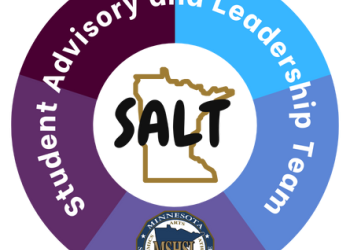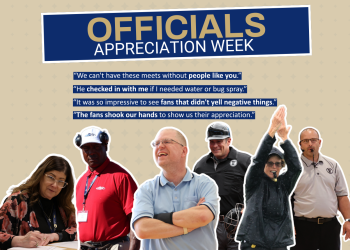Staff Reflection: Dr. Bill Roberts
Posted: Sunday, February 12, 2023 - 12:59 PM

Dr. Bill Roberts, the chair of the League's Sports Medicine Advisory Committee, shares a reflection on what we have learned following the COVID-19 outbreak and what we can do moving forward as the virus continues to lurk. Roberts was inducted into the League's Hall of Fame in 2022.
COVID-19 shut down our student-athletes in March of 2020 as the virus swept through Minnesota and the rest of the nation; a not so happy anniversary for many. From a peak of 87,000 new cases per week in January of 2022 to a current weekly average of 4,000-6,000 cases per week in Minnesota, the population risk has decreased, but not gone away. While we know more than we did in 2020, and have more resources to keep our student-athletes safe, we must work to keep our students healthy.
What do we know now that we did not in 2020?
COVID mutates, often making it less likely we can eliminate the disease (different from measles and other childhood diseases that were prevalent when I was a child) and you can get COVID more than once. Vaccines are available and reduce the severity of the disease making athletes and coaches less likely to be hospitalized or die. People aged 12 and older who had the new bi-valiant vaccine are three times less likely to die than people vaccinated with the original vaccines alone and 14 times less than those who have no vaccinations.
Masking helps reduce transmission to keep the viral load down in situations where COVID lurks; enclosed and poorly ventilated spaces with people shouting, singing, and cheering, like team busses and locker rooms. We know from Minnesota State High School League data you helped collect that outdoor sports are much less risky than indoor activities, but no sport is completely safe from the disease. Home testing is now readily available, and our student-athletes with symptoms can test to reduce the risk of transmitting COVID to teammates and coaches. COVID symptoms can hang on in some people causing a prolonged syndrome of fatigue, which seems to have no end and can end an athlete’s career.
Some early pandemic worries that did not materialize include heart scarring and increased cardiac death amongst student-athletes who had COVID. While scarring probably occurs in some cases, it has not been found as often as early studies predicted and may be similar in prevalence to scarring that occurs from other viral illnesses. A graduated return to activity following an infection probably reduces the risk of contracting long COVID and heart scarring for athletes.
I have traveled nationally and internationally since the pandemic restrictions were lifted. It is clear from my recent travel experience that most people consider COVID over compared to a year ago. Very few people are masking in the airports or on the planes, and the same is true in the stands and on the sidelines of sports venues. While the statistics indicate a marked reduction in the case load, COVID is still lurking in the shadows and infecting people, including student-athletes and me.
I chose to write this reflection on COVID because after three years of seeing patients with COVID, traveling regularly, and having had all available vaccines, I still contracted COVID while on a ski holiday. Not on the plane or in the airports (I was masked), not on the chairlifts or in the queue (outside with plenty of fresh air), not in the shuttle bus (short exposure time); but in the dining area of the ski lodge which was not well ventilated and a relatively small space full of people from all over the country talking loudly and having fun. I am thankful for the vaccines and medications developed in record time that allowed me to be less sick than those who contracted the disease three years ago. We are collecting data on high school athletes who had COVID to see how they are recovering; if you have an athlete who would like to participate, please let us know.
So, what now for athletes (and me)?
- Avoid situations where your athletes will be unnecessarily exposed even if they have had COVID and have been vaccinated. The ski lodge was probably not the best choice for me.
- Get vaccinated every year, for flu, too, to reduce risk of severe disease.
- Mask in small unventilated spaces if someone on the team is infected (who may have spread the virus to others who are asymptomatic but shedding virus).
- If infected, keep athletes out of physical activity until all symptoms, including fatigue, are gone, as early return may increase the risk of long COVID and heart scarring.




